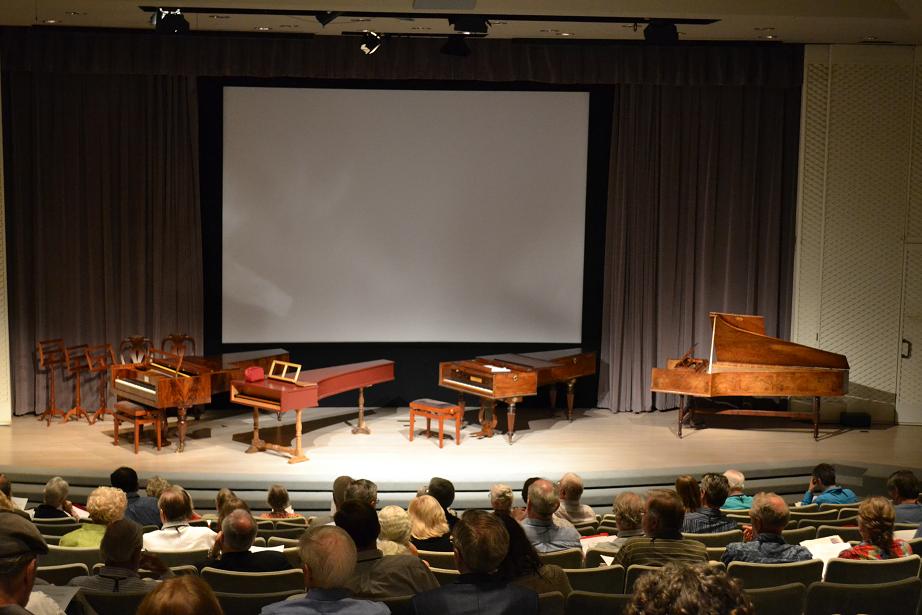Too Much to See and Hear in Such a Short Time
By Karen Hite Jacob, Photos by John Jacob
(This article also appeared in the 2013 Fall Issue of the Historical Keyboard Society Newsletter.)
The joint meeting of the Historical Keyboard Society of North America (HKSNA) and the American Musical Instrument Society (AMIS) took place in historic Williamsburg, Virginia (See on May 30–June 1, 2013. This event, along with the special exhibit, “Changing Keys: Keyboard instruments for America 1700–1830,” had long been anticipated. Years ago John Watson, our local arrangements chair, had invited both groups to participate as he worked on the exhibit and its wonderfully detailed book of the same title. (See http://www.preservationtheory.org/ck.aspx )
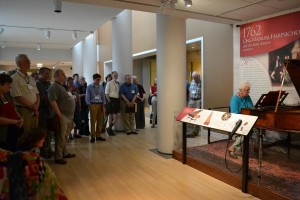
The conference, themed “Roots of American Musical Life,” included jam-packed days of presentations, demonstrations and performances. The “Changing Keys” exhibit includes twenty-eight spinets, harpsichords, organs, and square and grand pianos, most exhibited for the first time. The exhibit traces the transition from harpsichord to piano and the early-nineteenth-century struggle for independence from the British monopoly on musical instruments towards the early burgeoning of the American keyboard industry. The exhibit runs through December, 2014. For more information, use the Search option at the Williamsburg website, looking for changing keys: http://www.colonialwilliamsburg.com.
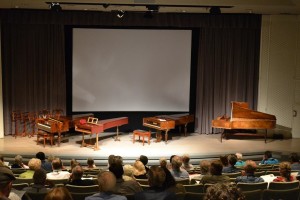
Over 150 people from various parts of the world attended. Sessions were held in a variety of locations offering attendees glimpses of the past, from the organ at Wren Chapel, College of William and Mary to a candlelight concert at the Governor’s Palace. Other events took place in the Williamsburg Lodge and at the DeWitt Wallace Decorative Arts Museum which housed the keyboard exhibit. Attendees viewed the exhibit and heard the instruments as part of the conference, but many chose to purchase passes allowing for additional visits to historic buildings and museums.
Instruments on stage (left to right): Viennese fortepiano by R.J. Regier, Italian fortepiano by David Sutherland, 1816 fortepiano by Broadwood and Sons, and 1758 double-manual harpsichord by Jacob Kirckman.
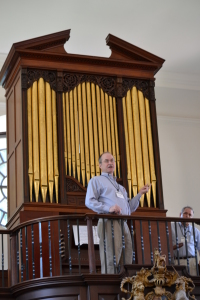
Some sessions were combined for both groups, including the opening with Judith Conrad on the clavichord performing early French dance music published by Attaignant. She ended her program with the attendees singing “Tant que vivray” as she demonstrated how one could sing the song and play the ornamented version at the same time. This was followed by Joe Butler playing selections on the organ from Williamsburg’s own Peter Pelham manuscript and that of Francis Hopkinson of Philadelphia. A 1769 letter from a Williamsburg resident mentions Pelham playing works like those in the two manuscripts. John Watson hand pumped the organ for Joe’s presentation, immediately transporting the audience into times past.

Presentations were on many topics, including British organ registration (Cal Johnson) and the little known composer, Bernard de Bury (Ruta Bloomfield). Performances included Sally Renée Todd with music of Zipoli, who went to South America, while others focused on German composers associated with Bach – Rebecca Pechefsky (Krebs) and Stephen Gamboa (C.P.E. and J.C. Bach).
Instrument makers provided very interesting presentations. Paul Irvin’s “Finding the Hallelujah in your Keyboard Instrument” continued a discussion carried over from previous conferences about musical instrument wire and the continued search for wire that may have been used in the 18th century. Irvin discussed how the sound of each instrument is a “system” affected by many variables, such as the appropriateness of the stringing schedule, the angle of the pins and the type of dampers. All this is to say that “old instruments” in our world are still re-evolving.
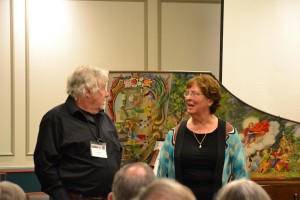
Karen Flint demonstrated music of the Borel Manuscript from the Provençal region now in the library at University of California, Berkeley. For this she used her new instrument by Owen Daly, after a harpsichord attributed to Claude Labrèche from the last quarter of the 17th century. This two-manual instrument has a solo 4-foot stop on the upper manual and two 8-foot stops on the lower. Owen also spoke about the instrument.
Regarding the evolution of the piano, David Sutherland continued his previous conversations about the early Italian pianos which served as a model for instruments by Silbermann and which were known to Bach. Andrew Willis performed works by J.S. & C.P.E. Bach on Sutherland’s copy of a 1730’s Italian fortepiano.
Tom Beghin revisited Beethoven’s Sonata Op. 106 in considering Broadwood pianos versus Graf pianos (London versus Vienna) of 1818. Related to the same time period was Randall Love’s performance of Beethoven’s Op. 109. Shuann Chai performed fantasies from the 1780’s by Mozart, Haydn and C.P.E. Bach. The final concert featured Andrew Willis with Beghin in a performance of the rarely heard Grande Sonata Op. 47 for four hands by Moscheles.
Additional topics presented were related to American music. We heard from Joyce Lindorff with selections from a rare collection, Robert Bremner’s “Harpsichord Miscellany, Book Second” (London, 1763) in Williamsburg’s John D. Rockefeller Jr. Library. Sonia Lee covered American battle pieces, and Faythe Vollrath performed music from Jefferson’s library. Several performances involved guest performers Beverly Biggs with violinist Andrew Bonner, including a sonata by Wodizka from Jefferson’s library. Beth Garfinkel’s program of witty songs from Williamsburg with actor-singer Christopher Goodbeer was a delight. Goodbeer’s diction made the songs easily appreciated.
Tom Strange’s talk on pianos not made in Boston, New York or Philadelphia provided insight into influences from France and Germany on instruments in Ohio and South Carolina. Again, this demonstrates how little is generally known about our own heritage.
A break from “history” included Jackie Edward-Henry performing “Travelin’ Music,” a commissioned harpsichord work by Douglas McConnell. We also heard from Duo Tastiera (Asako Hirabyachi and Gail Olszewski) in Asako’s works and in arrangements for harpsichord and fortepiano. Larry Palmer presented tidbits regarding the use of the harpsichord in 20th-century America.
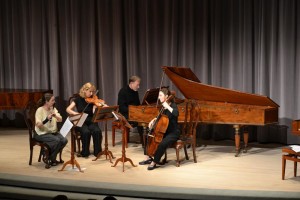
Larger performances included “Mr. Jefferson’s Music” researched by Mary Anne Ballade from the Library of Thomas Jefferson and performed with an array of singers and instrumentalists including harpsichordist Joseph Gascho, a previous Jurow Harpsichord Competition winner. Part of the final performance featured Andrew Willis in early American works by Reinagle and Mrs. Van Hagen and concluded with a chamber music arrangement of Beethoven’s Symphony No. 1 scored for flute, violin, cello and piano (Andrew Willis (piano), Rebecca Troxler (flute), Elizabeth Field (violin), and Stephanie Vial) . This arrangement by Hummel brought a most wonderful close to the conference – a piano and a few other instruments when well-played can be as large as a symphony and more refreshing!
